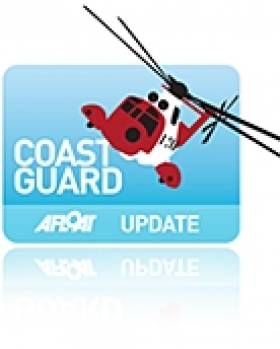Displaying items by tag: orange alert
Joint Garda Síochána & Coast Guard Appeal for Caution During weekend Stormy Weather
#orangealert – Members of the public have been urged to heed the advice of An Garda Síochána and the Coast Guard as Met Éireann issues an orange alert for Gale warning and a yellow alert for risk of localised flooding.
An Garda Síochána and Coast Guard particularly appeal to parents/guardians with children to use common sense and not to place their loved ones in danger.
Exercise great care on exposed piers, cliff walks and waterways prone to flooding and swift flowing water during the stormy weather over the coming weekend and next week.
Superintendent David Taylor, Garda Press Officer, said: "People need to recognise the destructive and dangerous power of nature and exercise extreme caution when close to areas such as cliff walks, harbours, rivers and lakes."
Coast Guard Chief of Operations Eugene Clonan said: "It is important for parents to be especially vigilant over the next few days and use common sense when taking children out near the coast or inland water ways".





























































